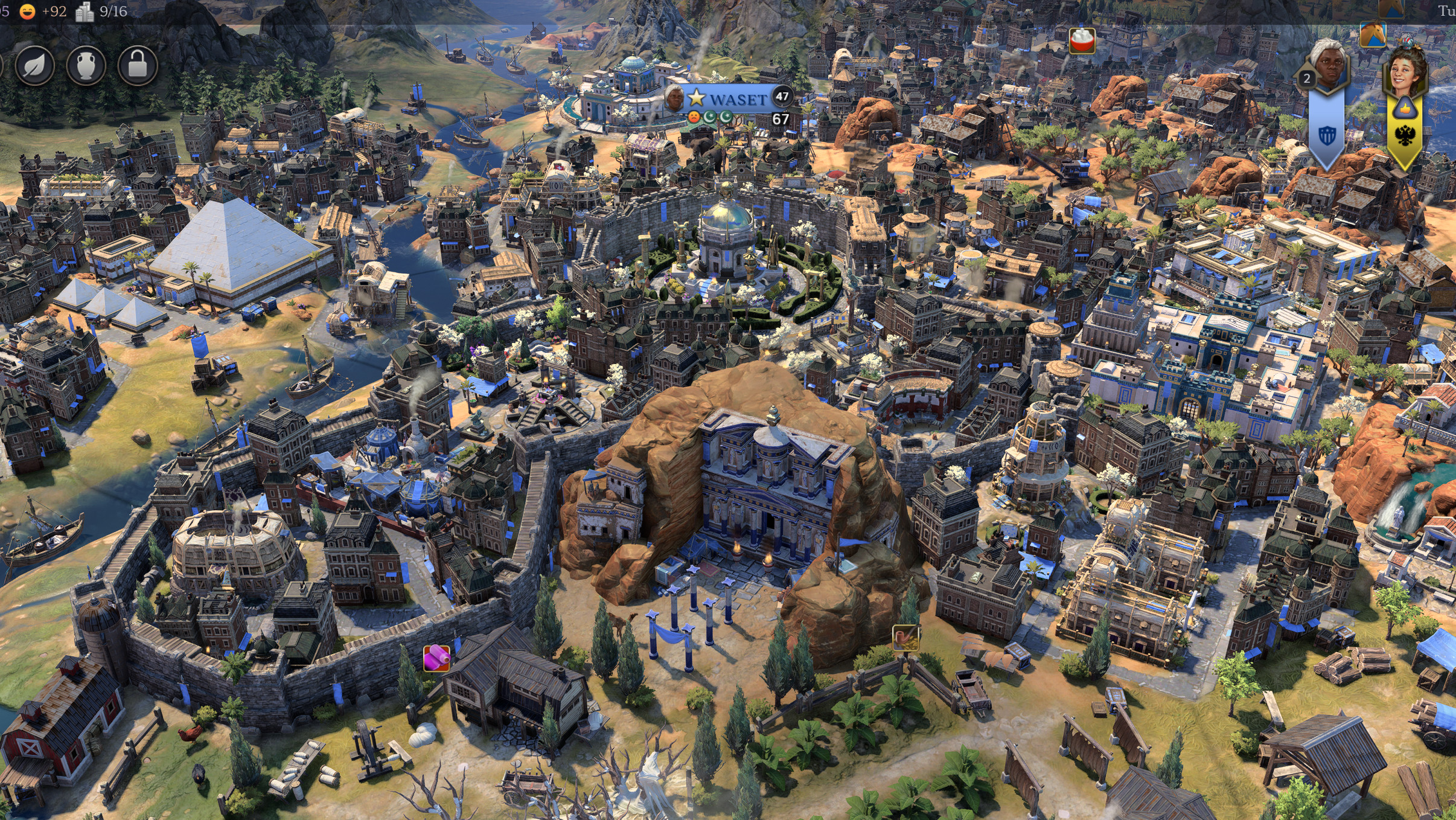
The game Civilization, which has a reach across multiple generations, started back in 1991. Unfortunately, I was still too young to appreciate the first release from developer Sid Meier, as well as several subsequent versions, as my fascination at that time lay with Age of Empires 2 and Diablo 2. However, my interest in the series truly piqued around 2009 when news about Civilization V came out.
I’ve invested a considerable amount of time into Civilization 5, and I firmly believe it’s the top pick in this series. It’s not just me who feels this way. Civilization VI debuted in 2016, generally well-received, but for fans of the earlier games, it felt like a significant shift. The graphics became more cartoonish, the mechanics felt less cohesive with each new feature introduced, and as the game progressed towards the end, it became cluttered, especially during late-game turns. Despite giving Civilization VI a good run, I found myself yearning to play Civilization 5 instead.
34 years have passed since the initial release of Civilization, and the original developers, Sid Meier and his team, established Firaxis Games in 1996, are now preparing to unveil Civilization VII (Civ 7) on February 11, 2025. I was fortunate enough to receive a beta version of the game for a sneak peek, and I’m excited to share some insights into the upcoming 4X strategy game.
My first 20 hours in Civilization VII
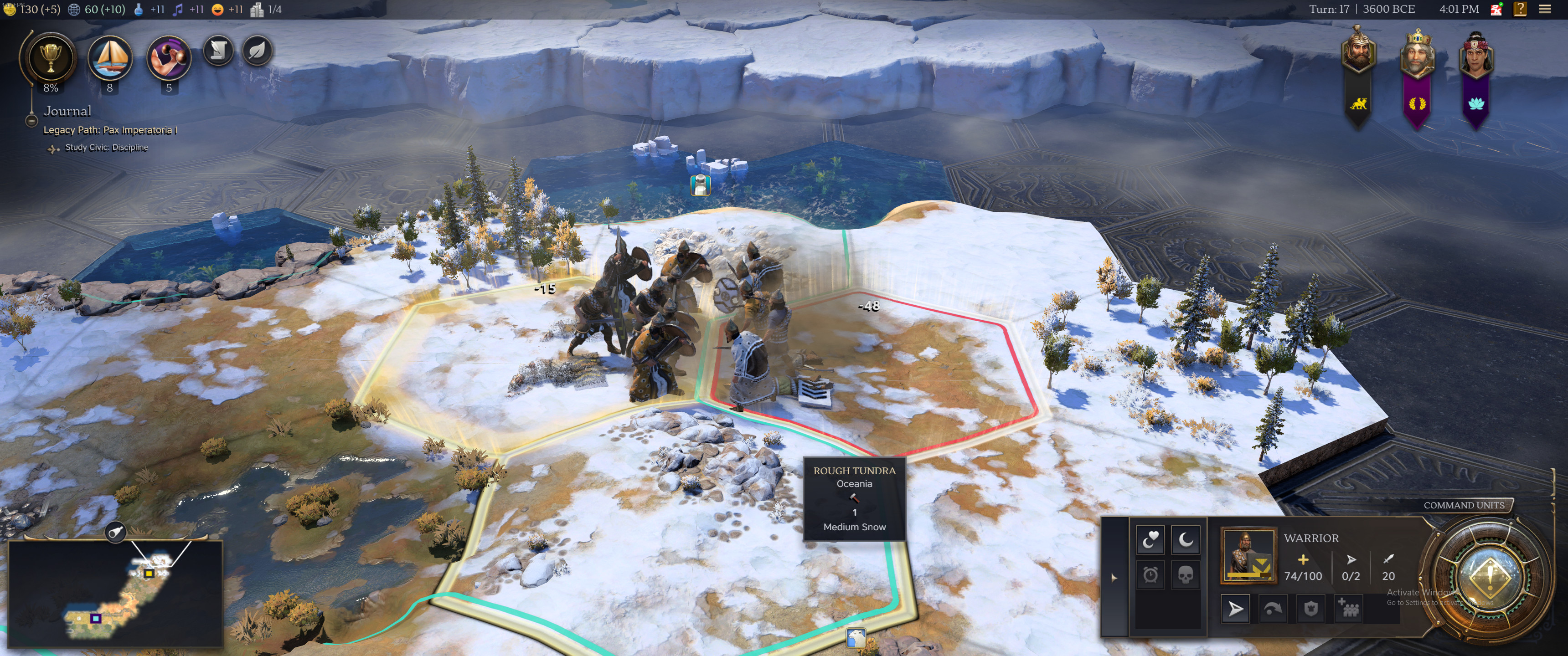
For approximately 20 hours, I had the opportunity to test an early version of Civilization VII. In this article, I’ll be concentrating on the Antiquity and Exploration eras, specific leaders, and civilizations. As there are certain elements I can’t discuss, my upcoming review near the game’s release date will provide a comprehensive overview of the entire game.
It’s important to mention that I didn’t anticipate spending as much time on this, but longtime Civilization players will understand the allure of just one more turn. With over 150 hours invested in Civ 5 compared to around 20 in Civ 6, it’s evident which game left a stronger impact than its immediate predecessor.
In essence, is Civilization VII enjoyable? To put it succinctly, Civilization VII addresses many of the challenges presented by Civilization VI, and it’s an absolute joy to experience. As I delve deeper into my lengthy gameplay session, I find myself pondering the culmination of my journey with Harriet Tubman guiding a strong nation defending the borders of their homeland continent. I’ll share more about that exciting encounter shortly.
Civilization VII addresses many challenges that emerged in Civilization VI, making gameplay an enjoyable experience.
One approach for rephrasing would be: It’s enjoyable for me to dive into previews as if I were a novice to the series (provided it’s relevant), or someone who knows nothing about the game beforehand.
Civilization VII is user-friendly, making it accessible even for those without previous experience. Starting with an unattached settler, you’re tasked with selecting your initial tile for your capital city. The game sets you up well to begin, and once you plant your roots, the gameplay expands.
In this game, the play area is broken down into hexagonal sections where players can grow their cities, gather resources, strategically place armies, uncover breathtaking landscapes, establish trading paths, and so on. The turn-based system allows for careful consideration in decision-making.
As a researcher exploring this game, I find that with the tutorial feature activated, it effectively helps me maintain control and progress smoothly. While the mechanics are generally well-explained, there seem to be an overwhelming number of pop-up windows requiring my attention. Despite their abundance, they are essential for understanding the depth of the game. Fortunately, the pace of learning is tailored to my preferences, allowing me to grasp the intricacies at my own speed.
As a novice in this series, I’d advise starting fresh with an easier AI opponent for the fundamental mechanics grasp. There’s no need to master everything immediately; even as an analyst, I’m still discovering some of the game’s intricate tools as you advance through Civilization. The game itself guides your progression by prompting choices like technology selection, troop movement, and continued construction of buildings or units. It’s challenging to wander off course, especially for beginners.
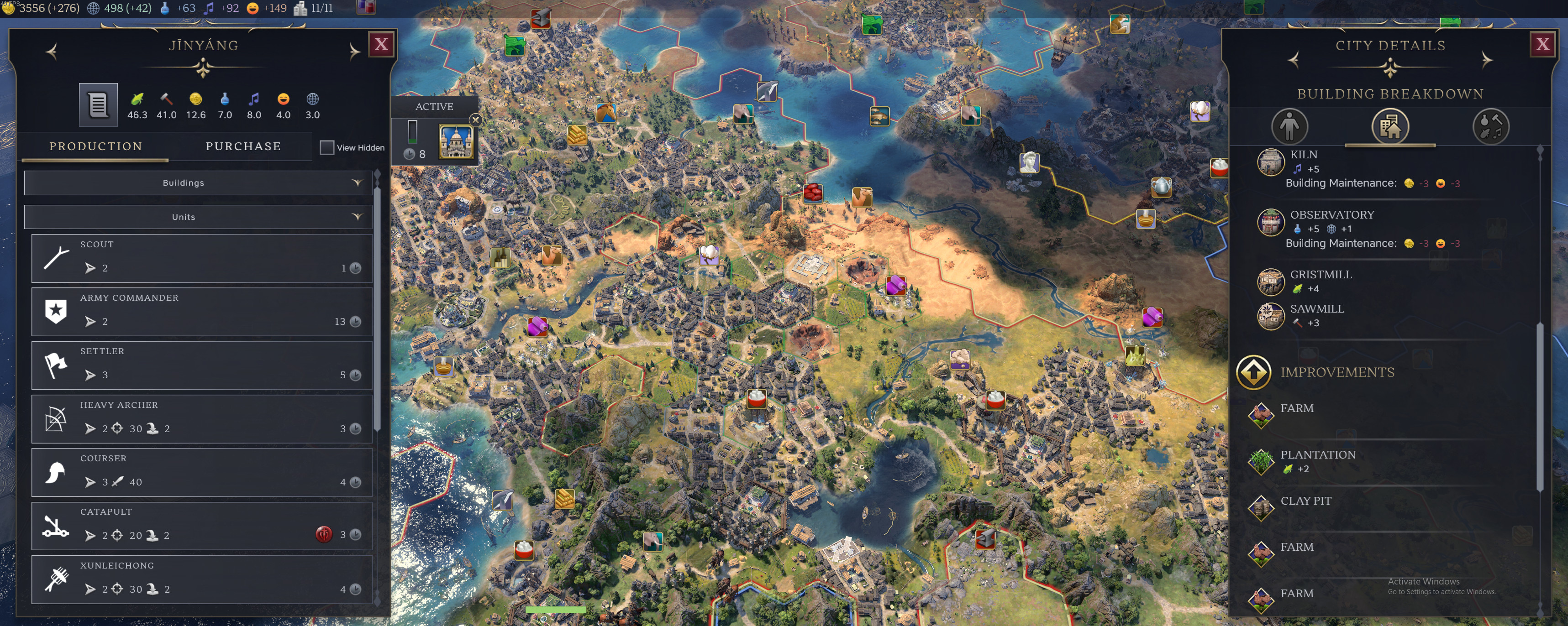
In much the same way, Civilization VII doesn’t fall short in depth and complexity compared to its earlier versions. It may seem straightforward when facing simpler opponents, but the true essence lies in utilizing all the strategic elements it offers. As you advance to higher difficulties, it becomes evident that a thoughtful application of every tool is crucial for success.
Among the latest game features, one revolves around international relations. Now, you can accumulate ‘influence’ by carrying out certain activities within your cities or towns, and by constructing specific buildings. This ‘influence’ serves to sway neutral nations and prominent figures coexisting on the map.
In one game, I selected Harriet Tubman as my leader primarily due to her benefits in the area of Influence. The game began on a single continent with me and two other civilizations. Across the sea lay two unbeknownst adversaries. Upon their arrival on our shores, I encouraged my continental allies to unite with me against the colonists. We established trade agreements, shared research progress, and held joint celebrations and marketplaces. Our armies collaborated in neighboring territories, successfully repelling the invaders.
During this period, I covertly monitored the activities of my allies, secretly acquiring their technology and military intelligence, while subtly manipulating internal events. I expanded my control over several independent nations, utilizing my Influence to demand increased military strength and economic growth. I aggressively conquered as many territories as I could, feeling unstoppable in my power.
Civilization VII games are split into three distinct parts
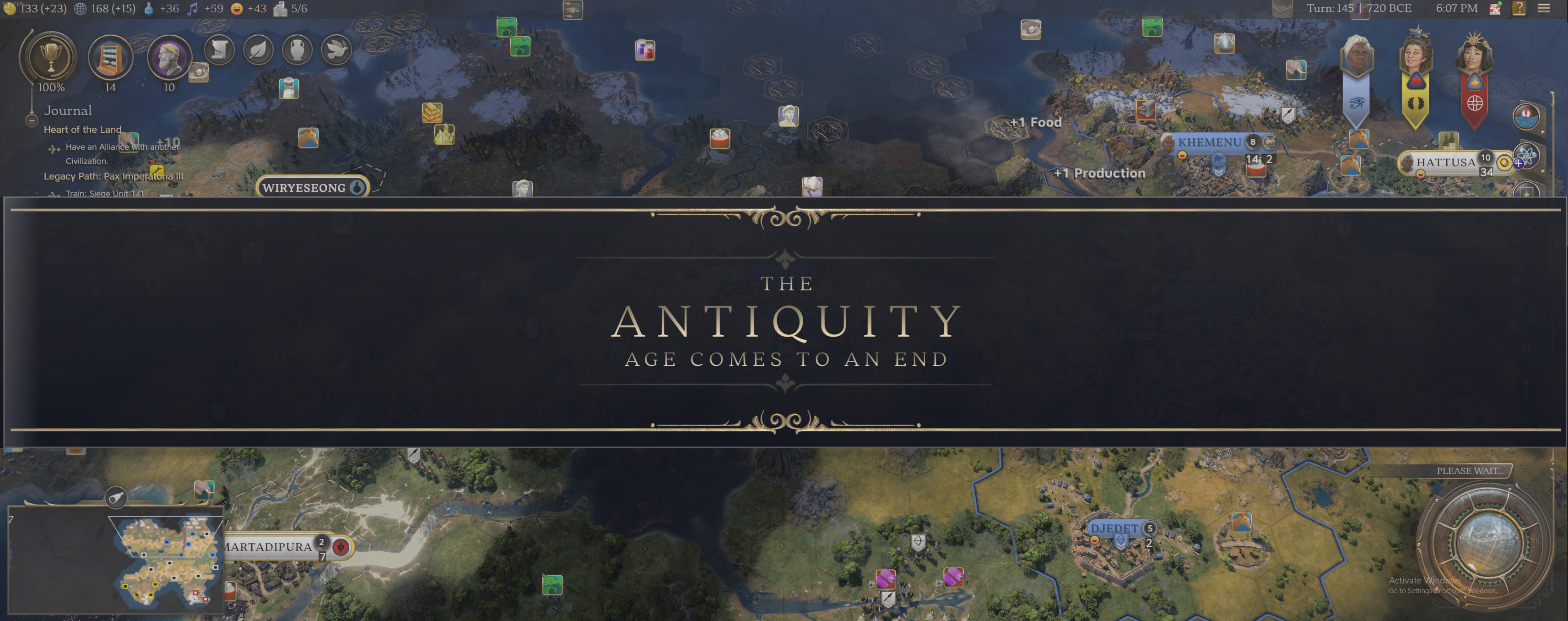
In this version of the game, instead of a flowing timeline where you could obliterate outdated armies by advancing far enough, the game is split into three clearly defined eras: Antiquity, Exploration, and Modern. Once the age counter reaches its limit, you progress to the next stage of the game.
As a tech-savvy individual, I find myself captivated by the intriguing concept of civilizations evolving over time. Unlike traditional beliefs where leaders remain constant across eras, it’s the civilization itself that undergoes transformation. The power to shape this journey lies in our hands. Previously, leaders were bound to specific civilizations, but now, we can transition from one age to another, each with a distinct civilization. We begin our Antiquity era as one civilization, venture into the Exploration period as an entirely different one, and conclude our game with a contemporary civilization that continues to thrive in the modern world.
As a researcher examining this captivating game, I’ve noticed how each civilization offers unique advantages and boosts, opening up intriguing possibilities for strategic combinations. Initially, I had a slight apprehension due to the limited initial choices, but my concerns were alleviated upon realizing that additional civilizations are gradually unlocked as I progress through the game and accomplish specific milestones.
As a researcher studying Civilization VII, I’ve discovered that this game offers organic progression paths for my in-game civilization. For instance, assuming the role of Confucius, I began with the Han people. Upon advancing into the Exploration era, my civilization transformed into the Ming people. Regrettably, I can’t disclose the details of the subsequent era, but the direction my civilization is taking is quite intriguing.
History is not kind to empires, and that’s reflected in Civilization VII’s new mechanics.
Returning to my Harriet Tubman gameplay, a sense of invulnerability that accompanied me at the culmination of the initial era was abruptly dispelled when encountering one more revamped game mechanic.
As your era comes to a close, your community encounters an unexpected predicament. It seems as though the nature of this crisis is determined by luck, but your response is far from haphazard. You’re offered various strategies for tackling the issue, each escalating the complexity while providing a minor advantage. For instance, in one game scenario, my settlements were struck with a plague, and I barely survived thanks to what I believe was a scarcity of scientific facilities. Without intellectuals, there was no remedy.
In the midst of our predicament, I may have alienated my allies due to my excessive utilization of Influence points. Regardless, I managed to lead my people into the Exploration era triumphantly. However, it wasn’t long before those former allies turned against me and declared war. The peace I once knew was short-lived as colonizers encroached on our territory and my former allies began amassing troops near our borders. Soon enough, I realized that the tranquility I had grown accustomed to was now a thing of the past. Empires often meet an unforgiving end, as depicted in Civilization VII’s updated game mechanics.
Towns, Legacies, and Attributes
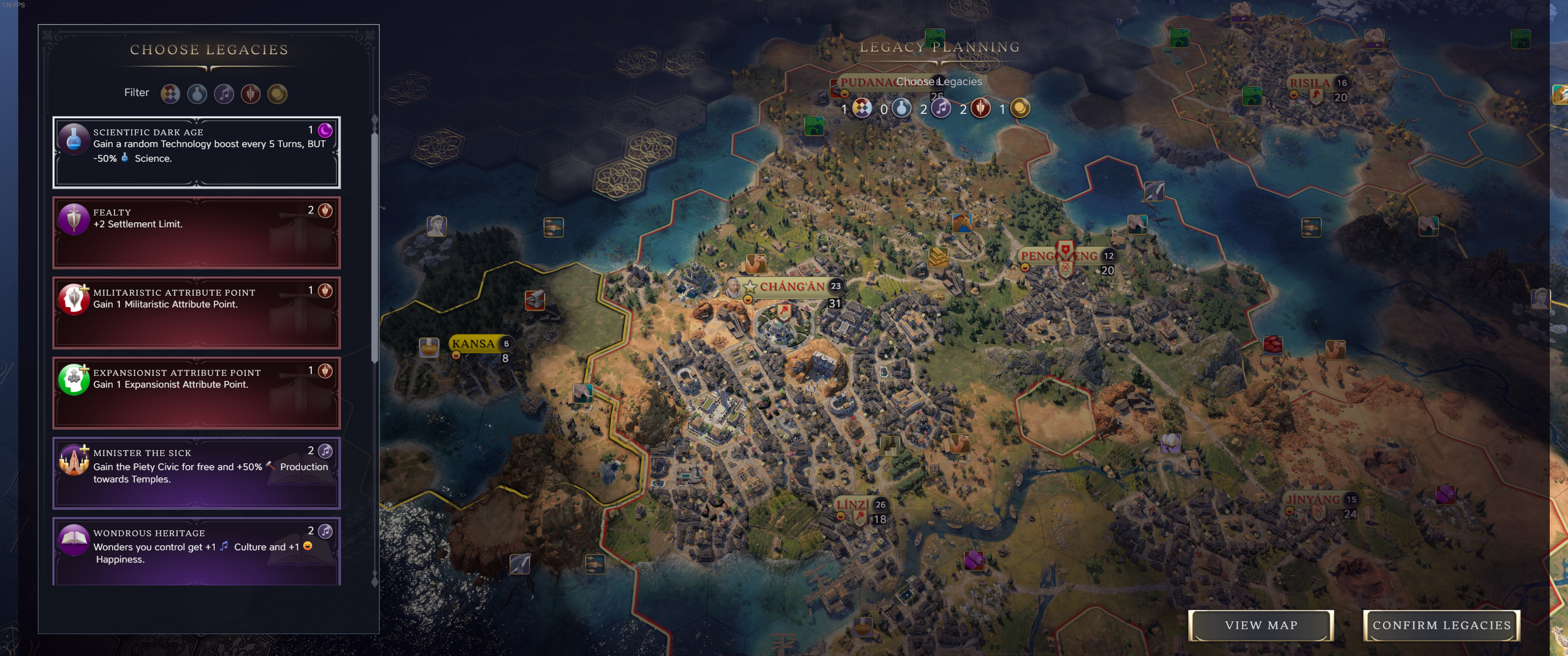
As you advance into a fresh age, your map undergoes a gentle refresh. Your capital city retains its city status, but any cities you had from the prior age are demoted to Town level. All independent territories are newly minted, ready to either be conquered or allied with.
In Civilization VII, towns are a fresh addition. Your settlers establish them, and after being set up, they primarily depend on gold transactions instead of production strength to construct buildings and recruit units. To elevate a town into a city in this game, you’ll need a substantial amount of gold savings.
As you step into a fresh era, you’re presented with various destinations to allocate your Accumulated Points from the past age. These points were primarily earned through tasks assigned by your counselors as they provided missions for you. The more accomplishments you make within one period, the stronger your foundation will be for the upcoming phase.
The path you select for your civilization’s development is influenced by the attributes of your leader, which are categorized into Cultural, Diplomatic, Economic, Expansionist, Military, and Scientific traits. As you advance, you earn points for various actions within these categories that can be spent immediately upon acquisition.
This presents some intriguing gameplay strategies. Suppose you’ve been consistently losing against an opponent for most of an era. Since you know they are deficient in culture and economy, you can opt for a strategy that favors your civilization in the next era while weakening theirs. Simultaneously, you can invest attribute points from your leader to strengthen your civilization’s focus. It seems like a harmonious plan, though navigating the numerous menus and skill trees does require some practice.
Reducing clutter without harming military and economic conquest
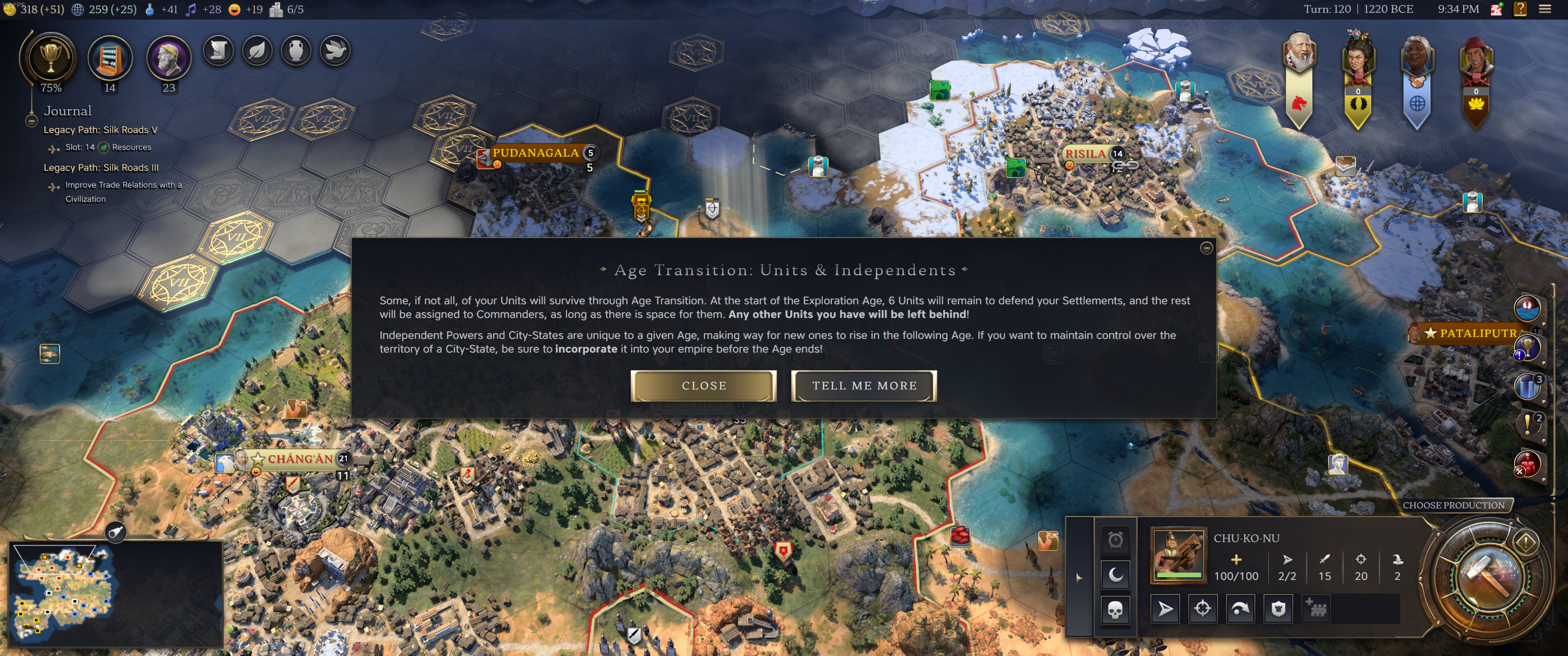
As a tech enthusiast immersed in the world of Exploration Age, my Harriet Tubman playthrough gradually transformed into an intricate web of military engagements. I found myself alienating my allies with my overzealous tactics behind the scenes, and the looming threat of full-scale war became increasingly unavoidable at my very doorstep. Yet, I braced myself for the inevitable conflict.
If you’ve had experience with previous Civilization games, you’re aware that the map can become quite chaotic, even without large armies in motion. This is due to the requirement for each unit to receive a command, and the need to keep units on alert so they only activate when an enemy appears. As a result, players often find themselves navigating through numerous units just to complete their turn in past games.
In Civilization VII, the recently introduced Army and Naval Commander units significantly address a previous problem I encountered. So far, I haven’t engaged in naval combat, but both types of commanders function similarly. They possess spaces, or “slots,” which can be filled by additional military units, allowing up to seven units to occupy a single tile, requiring only one action during its turn. Additionally, these commanders have an impact zone that enhances the performance of nearby troops.
Firaxis has done an impressive job with Commanders, making them costly to produce but powerful enough to impact battles decisively. It’s crucial to protect these commanders at all times due to their potential battle-changing abilities. What adds to their significance is a technology tree that becomes accessible as the commander earns experience through military conquests. If you’re facing a rebellion in a distant outpost, consider leveling up a commander and selecting skills tailored to the situation. In need of additional firepower on the battlefield? Expand the commander’s area of influence to boost defensive or offensive actions.
As a researcher studying game dynamics, I can attest to the impressive work Firaxis has done on the Commanders in their games. These characters demand a substantial investment to produce, but their impact on the battlefield is so profound that they can drastically alter the course of a conflict. Consequently, preserving their survival becomes an absolute priority.
To make cities less crowded and more efficient, city expansion is now simplified. As a city grows in inhabitants, you have the option to add new sections or double occupancy on existing areas using Specialists who also boost resource production. This eliminates the need to relocate individual units and establish them anew; instead, it’s done conveniently with minimal clicks.
In addition, there’s a fresh concept called Overbuilding mechanism, designed to tackle urban expansion issues. As eras evolve, so does the direction of your civilization, making certain past constructions less effective. You have the freedom to construct over these buildings, maintaining a compact city center with structures that are most advantageous for you. In Civilization VII, the importance of urban planning is highlighted significantly; haphazardly placing buildings can lead to reduced prosperity and power.
Civilization VII from a technical standpoint
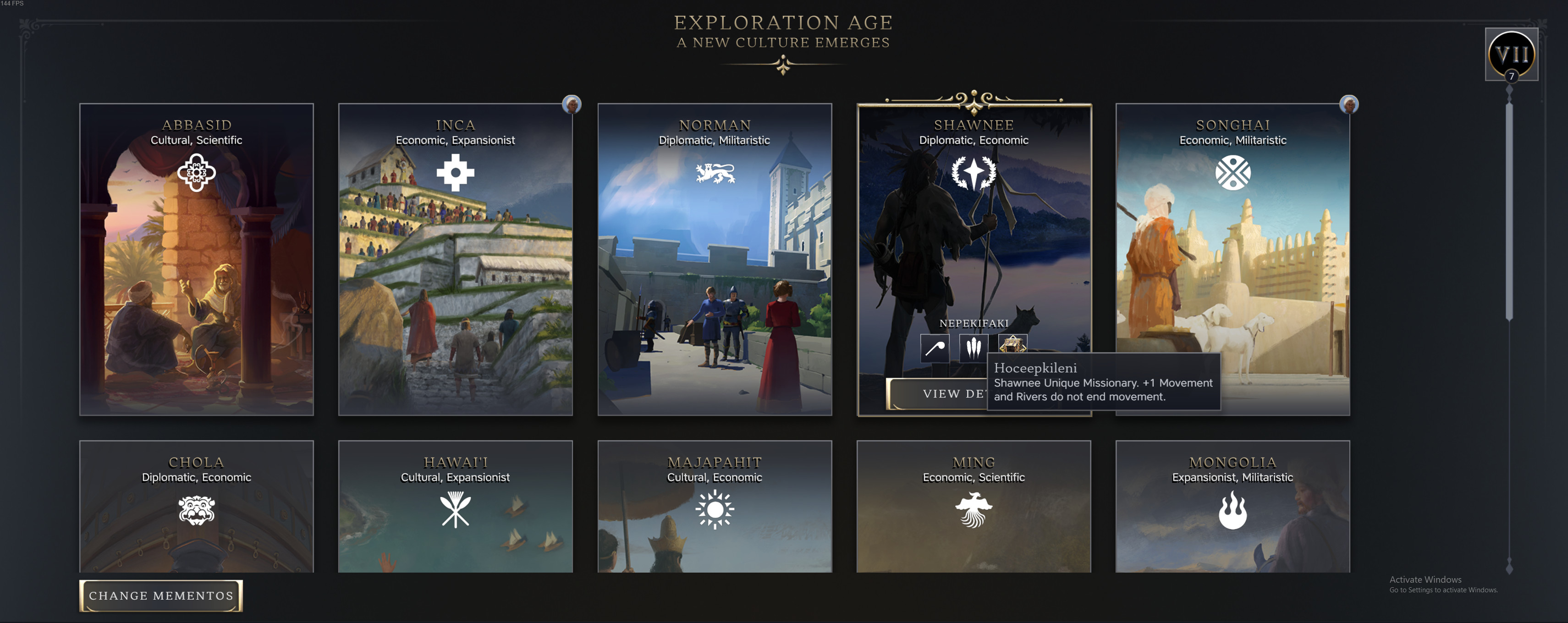
As a tech enthusiast, I’ve had the privilege to test out the beta version of Civilization VII on my gaming rig equipped with an AMD Ryzen 7 9800X3D processor, an AMD Radeon RX 6800 graphics card, and 32GB of DDR5 memory. With its upcoming launch on last-gen consoles, there’s no need to fret about this game running buttery smooth on a contemporary PC setup like mine.
As a devoted fan, I’ve been thoroughly impressed with this beta version. Despite countless hours of playtime, I’ve only encountered one minor crash, which I suspect was more due to an outdated graphics driver rather than any flaws in the game itself. The visuals and gameplay settings might not be as expansive at the moment, but I’m eagerly waiting for the full release to truly evaluate its potential.
In terms of its visual style, the somewhat playful graphics of Civilization VI – sometimes compared to those found in mobile games – have been softened. Although it doesn’t yet possess the clean, mature aesthetic of Civ 5, it undeniably represents progress. The structures you construct within your civilization are clearly visible, and each urban tile corresponds to its respective era, lending a vibrant, living atmosphere to the city.
In Civilization 6, Sean Bean delivered exceptional voiceover work – “A horse! A horse! I wish I were a king to command my own!” However, Gwendoline Christie holds her ground in the sequel, offering a respectable performance. While they may not be as lively or dynamic as Bean, their voiceovers align well with the simplified and minimalistic design of the menus, interfaces, and skill systems in the game.
Civilization VII gives a positive first impression
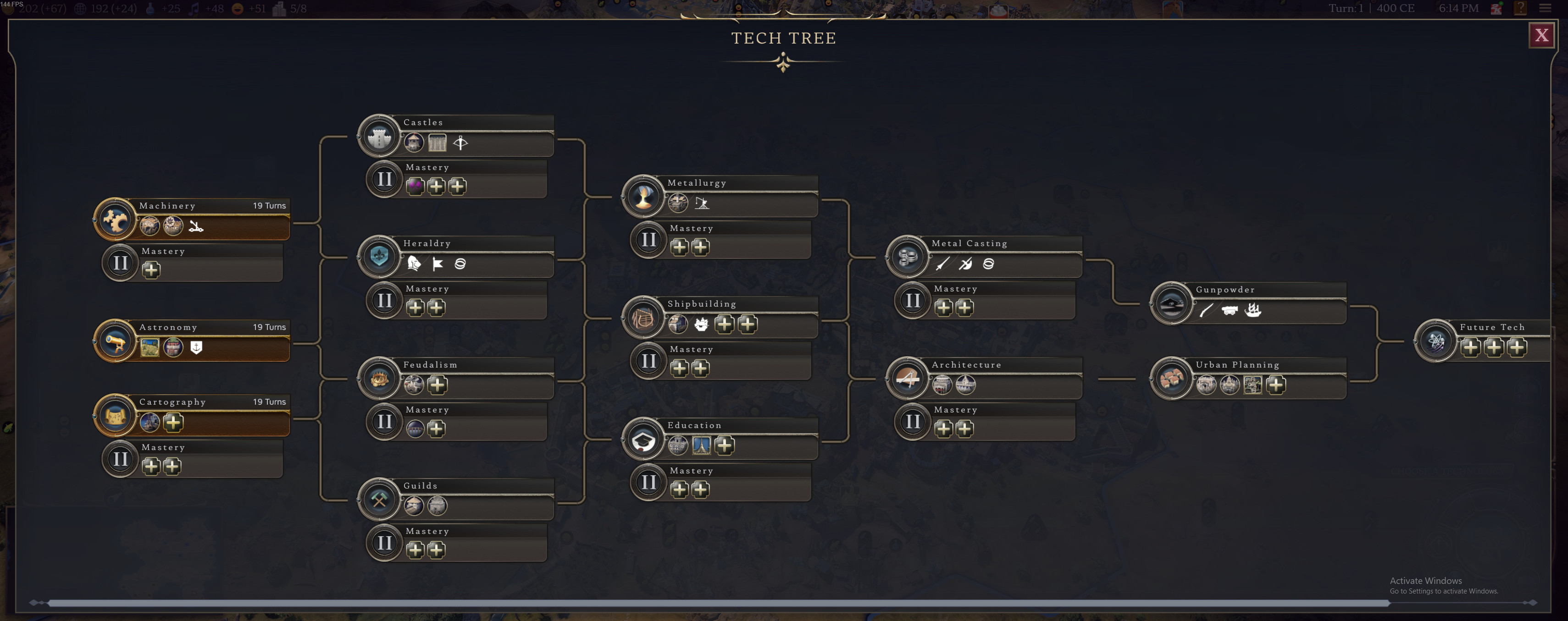
All in all, I’m really enjoying my time with Civilization VII. I’ve tried to avoid reaching the final era, as there are certain mechanisms I can’t disclose just yet. However, following this sneak peek, I’m eager to guide multiple leaders to the conclusion of a game.
Despite not holding my interest profoundly with Civilization VI, it appears that Firaxis has developed an installment that meets the standard set by Civilization V, and even introduces innovative mechanisms, far from being trivial or superfluous.
The new liberty to match distinct leaders with diverse civilizations is certain to spark creative strategies and gameplay styles. Commanders streamline the process of conducting large-scale wars without overcrowding the map. Furthermore, the revamped age mechanics surpassed my expectations and give your civilization a stronger sense of historical authenticity.
Firaxis was well aware that they needed to implement significant improvements on the series after Civilization VI received a moderate response, and I’m eagerly anticipating discovering the unique endgame experience that Civilization VII promises.
FAQ
Is Civilization VII Steam Deck Verified?
Yes, Civilization VII (Civ 7) has been verified for Steam Deck before its release. Even though the version of the game I’m currently playing doesn’t have support for this yet, an upcoming update should enable me to try out the game on the portable gaming device and see how well it performs.
When does Civilization VII launch?
It’s anticipated that the release of Civilization VII (Civ 7) will occur on February 11, 2025, making it available on PC, as well as current and next-generation consoles such as Xbox Series X|S, Xbox One, PlayStation 5, PlayStation 4, and Nintendo Switch.
Is Civilization VII coming to Game Pass?
There are so far no signs that Civilization VII will be available on Xbox Game Pass.
Pre-purchase the game for your PC right now through CDKeys, and enjoy savings of up to 28% on a Steam key. Similarly, you can pre-purchase the Xbox version via CDKeys, benefiting from discounts of up to 20%.
Civilization VII is also available to buy directly from the Microsoft Store for your Xbox consoles.
What are the Civilization VII recommended PC specs?
According to the Steam page for Civilization VII, the developers at Firaxis Games advise using a minimum CPU such as an Intel Core i5-10400 or AMD Ryzen 5 3600X, along with either an NVIDIA RTX 2060, AMD RX 6600, or Intel Arc A750 GPU. To run the game smoothly, they also suggest having at least 16GB of RAM. The game requires approximately 20GB of storage space on your device.
From my perspective, when it comes to the essential computer specifications, I’d suggest you look for a CPU that’s at least an Intel Core i5-4690 or its equivalent such as the i3-10100 or AMD Ryzen 3 1200. In terms of graphics, you’ll want a card like the NVIDIA GTX 1050, AMD RX 460, or Intel Arc A380. Lastly, don’t forget to ensure there’s at least 8GB of RAM under the hood.
How many different retail versions are there for Civilization VII?
There are three separate retail versions arriving for the Civilization VII launch.
In the Standard Edition, you get the fundamental game, and by pre-ordering, you’ll also receive bonus content featuring Tecumseh as the leader and the Shawnee civilization.
The Premium Version comes with the standard game, as well as Tecumseh and Shawnee content, regardless of whether you pre-purchase or not. Additionally, it grants early play access starting February 6, 2025. Furthermore, it offers two Leader Character Personas, a premium Cosmetics bundle, and a DLC pack set to release in March 2025.
The Founder’s Edition offers everything from the Deluxe Edition, along with an extra pair of Leader Characters, a special Founder’s Appearance set, and a future DLC pack planned for September 2025.
Read More
- Forza Horizon 5 Update Available Now, Includes Several PS5-Specific Fixes
- Gold Rate Forecast
- ‘The budget card to beat right now’ — Radeon RX 9060 XT reviews are in, and it looks like a win for AMD
- Masters Toronto 2025: Everything You Need to Know
- We Loved Both of These Classic Sci-Fi Films (But They’re Pretty Much the Same Movie)
- Valorant Champions 2025: Paris Set to Host Esports’ Premier Event Across Two Iconic Venues
- Karate Kid: Legends Hits Important Global Box Office Milestone, Showing Promise Despite 59% RT Score
- Eddie Murphy Reveals the Role That Defines His Hollywood Career
- Discover the New Psion Subclasses in D&D’s Latest Unearthed Arcana!
- Street Fighter 6 Game-Key Card on Switch 2 is Considered to be a Digital Copy by Capcom
2025-01-16 17:43